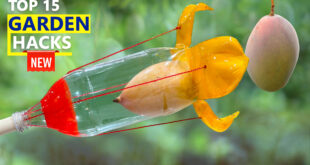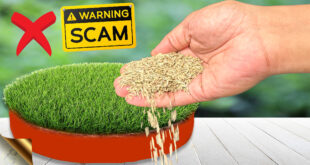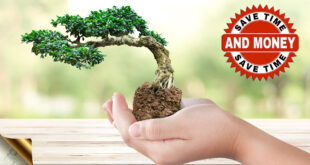In Today’s post we will look into 7 Fatal Mistakes or reasons, why your seeds are not germinating or sprouting? This knowledge and certain tricks shown in this video might take your vegetable gardening to the next level and you can achieve nearly 100% success in seed germination.
Seeds are magic to gardens. Tuck them in soil, add a little water and you’re on the way to a beautiful bloom or a tasty harvest. Whether you are a beginner or an expert gardener, you will certainly improve your success by avoiding these common errors that will be discussed shortly.
Germinating seeds is infact a simple process. But when seeds do not sprout, you feel disheartened and infact some loose their interest in gardening. But you should always take time to evaluate or diagnose the problem. Why didn’t my seeds germinate?
Here are the 7 FATAL MISTAKES or Answers to Seed Germination Problems.
- YOU ARE USING NON-VIABLE OR OLD SEEDS: If your
seeds have not sprouted within the appropriate number days, then most likely or
the most common reason could be the seeds are not viable.
Always check the expiry date or best before date on the seed packet and also purchase seeds from reliable sources.
This Seed viability issue can even be due to improper storage of seeds like in moisture which can cause them to rot or mold.
Here are two simple hacks to test whether your seed is viable. First method is: - Simply Pour the Seeds in a container of water and if the seeds are floating, they are not viable. Just discard them and choose only those sunk to the bottom.
- Checking seed viability using a wet toilet paper method. Pour some seeds on a wet toilet paper and keep it in a zip lock bag for 24 to 48 hours and see for sprouting to check viability.
- Another important point to remember is the Seed Pod Maturity, specially if you are growing from seeds from a fruit or vegetable. A fruit or vegetable develops from a flower after pollination and fertilization process and is nothing but a seed pod. In my previous episode, the seeds from green bell pepper did not germinate but those from the yellow and red pepper germinated to nearly 100%. The capsicum or bell pepper gradually matures from green color to yellow, orange and then finally Red. Hope this answers the question!
- WRONG PLANTING TECHNIQUE: Planting your seeds too deep can cause problems with sprouting. So, What is the ideal depth for sowing seeds? The rule of thumb is to plant seeds at a depth equal to two times or max three times their width. It’s better to plant seeds too shallow than too deep. You should also avoid pressing down on top of your seeds after you plant them.
- BAD SEED STARTING POTTING MIX OR SOIL: This is a very important factor for success rate. Starting seeds in garden soil alone is not recommended because this soil is too compacted and the seeds cannot sprout. Also if it contains large pieces of stones, wood and stuff like that, can prevent the seeds from sprouting freely. And moreover this soil is full of harmful pathogens that can affect seed germination and also the health of the seedling. Many gardeners suggest baking this soil in oven at 180 degrees for 30 minutes to kill most weeds and pathogens. But this will also kill the beneficial microorganisms like mychorrhizae and pseudomonas from the soil. So, it’s always better to prepare your own seed starting mix without using garden soil. One such recipe, you can follow is:
- Cocopeat or peat moss – 70% + Compost like decomposed cowdung or Vermicompost 30%. This is more that sufficient and the best seed starting mix. You can optionally add stuff like perlite and fine grade vermiculite into this mixture.
- Alternately you can also use seed starting coco peat pellets which can be directly transplanted into soil when the seedling are ready for transplant.
- WRONG TEMPERATURE AND WRONG SEASON: This is another common mistake most of us commit. Planting by the season depending on the zone you live in is really important, because the temperature is a very important factor for seed germination. Temperatures that are too high or too low can cause problems germinating seeds. So, try to follow the planting calendar of the zone you live in.
- IMPROPER WATERING: Seed germination is highly dependent on watering. If it’s too dry, they fail to sprout! And too wet they will rot in the dirt. Seeds need to be moderately moist to sprout and this is infact difficult to assess. Also very young seedlings are even more tender and can die due to improper watering. The best trick to water these is using a bottom tray method. Just keep the bottom tray filled with water and do not water from top. If the potting medium is dry, it starts to absorb water through the drainage holes and this process goes on and is completely safe method of watering seeds and tender seedlings.
- DIRTY OR UNSTERILE CONTAINERS OR SEED TRAYS: For a better success rate in seed germination, its always wise to use a fresh new container or thoroughly clean the old containers before adding the potting mix. Fungal and mold infections are the most common infection from dirty containers. If infection occurs you will notice a fuzzy growth on the top of the planting medium. You may also see that a seed sprouts, but then rots at its base and falls over. This is called damping off and is caused by a fungal infection in your soil.
To clean your old containers, You can use hydrogen peroxide or even use your kitchen baking soda – like 1 tablespoon per litre of water and clean the containers with this solution. Or simply clean it with soap and water or even a diluted bleaching powder.
- ROLE OF SUNLIGHT: Do Seeds require sunlight to germinate? For most of the seeds, sunlight is not required for sprouting of the seeds. Dark, damp and warm conditions are best for the sprouting stage of germination. But once the seeds germinate and two new tiny leaves are out, they need sunlight. You must follow the “Hardening Off” Method which means a gradual exposure to sunlight, like 1 hour for the first day, 2 hours for the second, 3 hrs for the third and so on to provide full sun exposure.
 GKVKs – Gardening Tips and Store Gardening Tips and Store
GKVKs – Gardening Tips and Store Gardening Tips and Store



